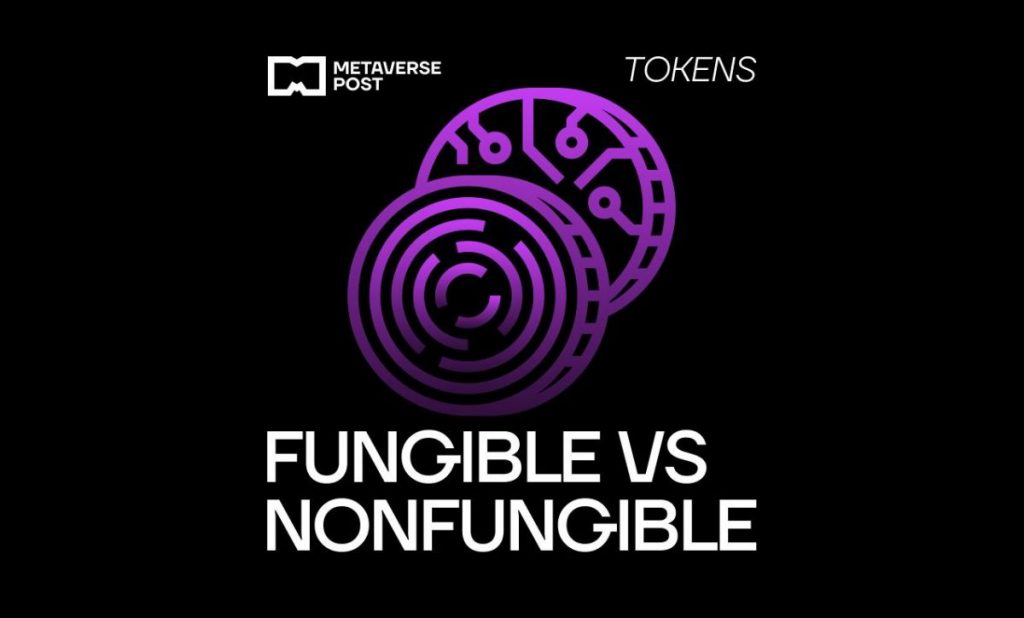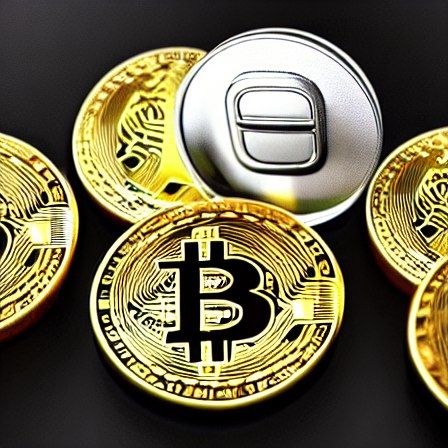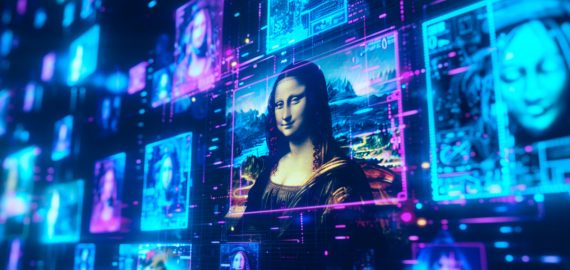Fungible vs Non-Fungible Tokens (NFT): What is the Difference?


In Brief
The comparison between fungible and non-fungible tokens suggests that non-fungible tokens, or NFTs, have a distinctive value proposition.
Fungible tokens can function as currency because they are identical, divvyable, and lack individuality.

The fungible vs non-fungible token debate is not new; objects resembling coins were used as trading tools as early on as the Roman Empire. These coin-like objects seem to have been tokens for activities such as visiting brothels or gambling establishments. Fungible tokens are defined as being interchangeable; one unit is the same as any other unit. In contrast, non-fungible tokens are each unique; no two units are alike.
The fungibility of a token is determined by its degree of divisibility. A Bitcoin, for example, can be divided into 100 million smaller units, each called a satoshi. Thus, each Bitcoin is fungible; one Bitcoin is interchangeable with any other Bitcoin. In contrast, Ethereum’s native token, Ether, is not fungible. This is because it is not divisible; one Ether must be traded for another Ether, rather than being divided into smaller units.
- What are the types of tokens?
- What is a fungible and nonfungible token?
- How are tokens different from cryptocurrencies?
- What are fungible and nonfungible tokens in a blockchain?
- How do NFTs work, and how do you create one?
- How to buy or sell a nonfungible token
- What are the pros and cons of using nonfungible tokens?
- FAQs
- Conclusion
In the crypto era, tokens represent something physical or non-physical (like a service) within its ecosystem. Fungible tokens are often used as a currency, while non-fungible tokens represent assets. The key difference between the two is that fungible tokens are interchangeable, while non-fungible tokens are not.
In general, fungible tokens are more commonly used than non-fungible tokens. This is because fungible tokens are more versatile; they can be used as a currency, store of value, or unit of account. Non-fungible tokens, on the other hand, are mostly used to represent assets.
What are the types of tokens?
Broadly speaking, there are two types of tokens: fungible and non-fungible. Fungible tokens are interchangeable; one unit is the same as any other unit. Non-fungible tokens are each unique; no two units are alike.
Utility tokens give users access to blockchain-based goods and services.
Security tokens are digital representations of more traditional assets, like stocks and shares, that are tracked on the blockchain.
What is a fungible and nonfungible token?
Fungibility is a topic that may be difficult for many people to understand, particularly if they are unfamiliar with the idea of economics. The most significant distinction is that crypto tokens demonstrate fungibility utilizing a code script rather than through an economic value or principle.

Fungibility is the ability of an asset to be interchangeable with another identical asset. A good or service is fungible if it can be replaced by another identical good or service. For example, one barrel of oil is interchangeable with any other barrel of oil.
Non-fungible means that each crypto token is unique and not mutually interchangeable. Non-fungible tokens (NFTs) are digital assets that cannot be replaced by another identical asset. Each NFT is unique, and thus, they have a higher value than fungible tokens.
The data they contain is the most significant difference between fungible assets and nonfungible assets. While fungible tokens like Bitcoin retain value, nonfungible tokens such as a researcher’s degree or a painting store information.
How are tokens different from cryptocurrencies?
Both cryptocurrencies and tokens are digital assets that use cryptography to secure their transactions. However, there are a few key differences between the two.
Cryptocurrencies are decentralized and use blockchain technology, while tokens can be either centralized or decentralized and may or may not use blockchain technology.
Cryptocurrencies are typically used as a medium of exchange, while tokens are often used to represent assets. Cryptocurrencies are Fungible, while tokens can be either fungible or non-fungible.
What are fungible and nonfungible tokens in a blockchain?
Fungible tokens are digital assets that can be replaced by another identical asset. For example, Bitcoin is a fungible token because each Bitcoin is the same as any other Bitcoin. In contrast, non-fungible tokens (NFTs) are digital assets that cannot be replaced by another identical asset. Each NFT is unique, and thus, they have a higher value than fungible tokens.
The data they contain is the most significant difference between fungible assets and nonfungible assets. While fungible tokens like Bitcoin retain value, nonfungible tokens such as a researcher’s degree or a painting store information.
Fungibility is the ability of an asset to be interchangeable with another identical asset. A good or service is fungible if it can be replaced by another identical good or service. For example, one barrel of oil is interchangeable with any other barrel of oil.
Non-fungible means that each crypto token is unique and not mutually interchangeable. Non-fungible tokens (NFTs) are digital assets that cannot be replaced by another identical asset. Each NFT is unique, and thus, they have a higher value than fungible tokens.
The first real-world use case for NFTs occurred in 2017 when the CryptoKitties game was released on the Ethereum blockchain. The game represented the first real-world application of NFTs in the crypto world, and it eventually became one of the most well-known decentralized applications on the Ethereum protocol.
How do NFTs work, and how do you create one?
Nonfungible tokens are areas that can be created and stored on a public blockchain platform that is open to everyone. These tokens are sometimes also called ” smart contracts.” The most popular platforms that NFTs are built on include Ethereum, EOSIO, and TRON.
When you want to create an NFT, you’ll first need to decide which blockchain platform you want to use. Each blockchain has its own set of rules and guidelines that you’ll need to follow. For example, the Ethereum blockchain requires that you use a specific programming language called Solidity to create your NFT.
Once you’ve chosen a platform and figured out how to create your NFT, you’ll need to mint your token. Minting is the process of creating a new NFT and adding it to the blockchain.
How to buy or sell a nonfungible token
Digital proof of possession, also known as NFTs, can be obtained and sold online. They are digital evidence of ownership for any specific goods. The most frequent use of NFTs is in the form of digital art, but they also take other shapes, including clothing, gaming assets, and memberships.

Just as with any other online sale, you’ll want to do your research before buying an NFT. Find out which platform the NFT is being sold on and what the fees are. You’ll also want to make sure that the NFT is stored in a safe place, such as a digital wallet.
Once you’ve found an NFT that you’re interested in, you can purchase it using cryptocurrency. The most popular cryptocurrency for buying and selling NFTs is Ethereum, although other options do exist.
What are the pros and cons of using nonfungible tokens?
Pros:
- NFTs are unique and cannot be replaced by another identical asset, which makes them more valuable than fungible tokens.
- NFTs can be used to store data, which makes them useful for a variety of applications.
- NFTs are built on blockchain technology, which makes them secure and transparent.
Cons:
- The process of creating an NFT can be complicated and requires a certain level of technical expertise.
- NFTs are not yet widely accepted or understood, which could limit their adoption.
- The value of NFTs is highly volatile and could drop precipitously in value.
Keep track of cryptocurrency distributions in our Airdrops Calendar.
FAQs
Tokens that are fungible are identical, divvyable, and can function as money. On the other side, non-fungible tokens are 100% unique and have just one owner. In blockchain games, they can stand in for things like collectibles or real estate.
Non-fungible tokens (NFTs) are exclusive cryptographic tokens that are only available on blockchains and cannot be copied. Real-world objects like artwork and real estate can be represented by NFTs. These physical assets can be “tokenized,” which improves the efficiency of trading while lowering the risk of fraud.
The most well-known applications of blockchain technology include Bitcoin and other cryptocurrencies, which are examples of fungible tokens.
FT can be divided into 195 different crypto-currencies and stakes and are interchangeable and equivalent in every way. While NFT are indivisible and cannot be exchanged for other tokens of the same kind
Another well-known example of non-fungible tokens being used to represent virtual real estate is Decentraland. Using Ethereum-based NFTs, users can buy LAND parcels on this platform, which they can then use or develop as they see appropriate.
Dollar bills, options, common shares, and commodities are all examples of fungible items. Shares of stock that are cross-listed, or traded on various exchanges, are nevertheless regarded as fungible.
Assets or tokens that can be divided into multiples are fungible. For instance, fungible fiat currencies include the dollar: A $1 bill is worth the same in Miami as it is in New York City. A cryptocurrency like Bitcoin can also be a fungible token: No matter where it is issued, one bitcoin is worth one bitcoin.
Examples of fungible items include commodities, common shares, options, and dollar notes. Because each unit has distinct features that can increase or decrease value, assets like diamonds, real estate, and baseball cards are not fungible.
Fiat currency is fungible because the value remains the same regardless of the denomination or series of banknotes used for repayment. Therefore, a person does not need require another $10 notes to pay a $10 bill, for example.
Conclusion
Fungible tokens like Bitcoin retain value, while nonfungible tokens store information. Fungibility is the ability of an asset to be interchangeable with another identical asset. Non-fungible means that each crypto token is unique and not mutually interchangeable. The first real-world use case for NFTs occurred in 2017 when the CryptoKitties game was released on the Ethereum blockchain.
Additional NFT resources
Disclaimer
In line with the Trust Project guidelines, please note that the information provided on this page is not intended to be and should not be interpreted as legal, tax, investment, financial, or any other form of advice. It is important to only invest what you can afford to lose and to seek independent financial advice if you have any doubts. For further information, we suggest referring to the terms and conditions as well as the help and support pages provided by the issuer or advertiser. MetaversePost is committed to accurate, unbiased reporting, but market conditions are subject to change without notice.
About The Author
Damir is the team leader, product manager, and editor at Metaverse Post, covering topics such as AI/ML, AGI, LLMs, Metaverse, and Web3-related fields. His articles attract a massive audience of over a million users every month. He appears to be an expert with 10 years of experience in SEO and digital marketing. Damir has been mentioned in Mashable, Wired, Cointelegraph, The New Yorker, Inside.com, Entrepreneur, BeInCrypto, and other publications. He travels between the UAE, Turkey, Russia, and the CIS as a digital nomad. Damir earned a bachelor's degree in physics, which he believes has given him the critical thinking skills needed to be successful in the ever-changing landscape of the internet.
More articles

Damir is the team leader, product manager, and editor at Metaverse Post, covering topics such as AI/ML, AGI, LLMs, Metaverse, and Web3-related fields. His articles attract a massive audience of over a million users every month. He appears to be an expert with 10 years of experience in SEO and digital marketing. Damir has been mentioned in Mashable, Wired, Cointelegraph, The New Yorker, Inside.com, Entrepreneur, BeInCrypto, and other publications. He travels between the UAE, Turkey, Russia, and the CIS as a digital nomad. Damir earned a bachelor's degree in physics, which he believes has given him the critical thinking skills needed to be successful in the ever-changing landscape of the internet.

















































